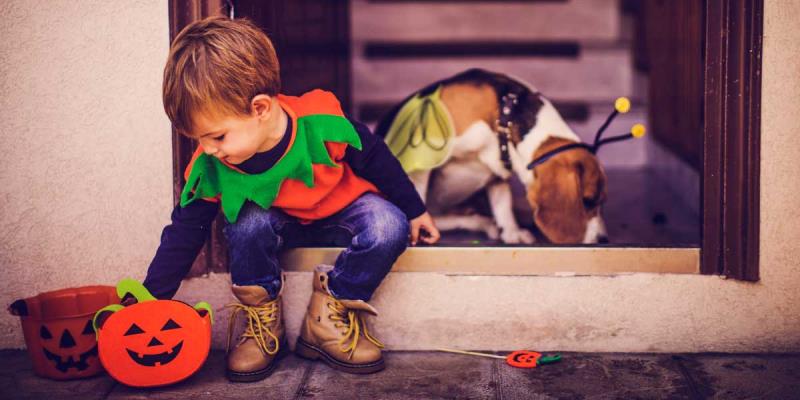Halloween: Celebrating the ghastly & ghoulish in New Zealand
Published on Mon Oct 30 2017 in Community
In many parts of the world 31 October is a night of frights and mischief. Halloween is gaining popularity in New Zealand, but many Kiwis are still unfamiliar with the holiday. When did Halloween begin? Isn’t it just an American thing? Let’s take a look at the history of this spooky holiday.
Where it all began
It’s widely believed that the ancient Celtic festival of Samhain is the inspiration for Halloween.1 This pagan celebration was adopted by the early Catholic Church and Christianised, becoming part of the All Hallow’s Day celebrations. The word Halloween is a more recent addition, dating to around 1745. It describes 31 October as All Hallow’s Eve, written as e’en or een in Scots. This was shortened to Hallowe’en, creating the name we still use today.
Many Samhain traditions practiced across what is now the United Kingdom are still recognisable in modern Halloween celebrations. People would go “mumming,” walking house-to-house in costume and reciting verses or singing songs in exchange for food. Apple bobbing was a way to tell one’s future, as well as a popular game. Pranksters carved faces into turnips or other root vegetables and used them as lanterns.
Religious observances also shaped modern Halloween symbols. Christians believed that the veil separating the living from the afterlife thinned on All Hallow’s Eve. Worshippers wore masks and costumes to disguise them from the dead, or left offerings of small cakes on the graves of family members. Some families spent the entire night praying at their loved ones’ graveside.
Coming to America
Today, Halloween is strongly associated with the United States and Canada. Early Puritan settlers did not celebrate the holiday, as they had strong opposition to many celebrations established by the Church (including Christmas!). It wasn’t until large numbers of Irish and Scottish immigrants began arriving in North America during the 19th century that Halloween became a major holiday there.
Halloween quickly spread outside of immigrant communities, and was embraced by people of all backgrounds. An American spin was also given to some traditions. Pumpkins, which are native to North America, replaced turnips for making carved lanterns. Mumming morphed into “trick-or-treating,” an activity practiced by children only. The first mass-produced Halloween costumes were sold in the 1930s, just as trick-or-treating was gaining popularity around the United States.
Halloween celebrations in North America now include activities for people of all ages. Other popular ways to mark the day include decorating one’s home, throwing costume parties, watching scary movies or telling ghost stories.
Celebrating in New Zealand
Halloween has been gaining popularity in New Zealand since the late 1990s. Costumes and special lollies can now be found in many shops. Trick-or-treating is not as widespread as it is in North America, though you might have a few young visitors knock on your door. You may want to buy some lollies just in case!
Pumpkin carving is not popular here. Halloween in the Northern Hemisphere falls around the autumn harvest, meaning bright orange pumpkins are plentiful in grocery stores. However, October is when Kiwis traditionally plant gardens. Pumpkins here aren’t ready for carving until long after 31 October.
Do you celebrate Halloween?
We’d love to hear your thoughts on this ghoulish observance! Share your stories, tips or costume ideas with us on Facebook.
1. BBC, Religions: All Hallows’ Eve
About Author: Momentum Life is a leading provider of Life insurance and Funeral insurance in New Zealand.
TAGS:
The content provided in this article is for information purposes only. The information is of a general nature and does not constitute financial advice or other professional advice. To the extent that any of the content constitutes financial advice, it is limited to Momentum Life products only and does not consider your specific financial needs or goals. You should consider whether the information is appropriate for you and seek independent professional advice, if required.
All product information is correct at the time this article was published. For current product information, please visit the Momentum Life website.
